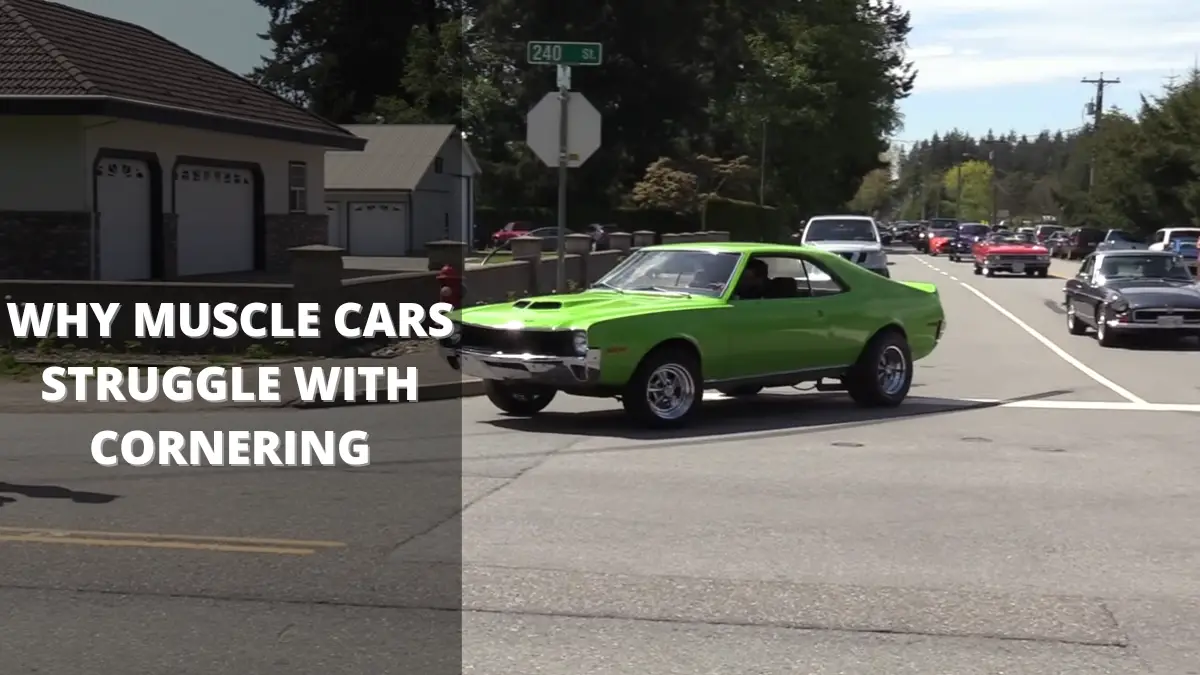Muscle cars have long been a staple of American automotive culture, prized for their raw power, aggressive styling, and thundering exhaust notes. However, despite their impressive straight-line speed and acceleration, muscle cars have often been criticized for their lackluster handling, particularly in regards to cornering.
This article will explore the technical aspects behind this phenomenon, discussing factors such as vehicle weight, suspension design, and tire technology.
In short, the primary reasons why muscle cars struggle with cornering are due to their heavier weight, dated suspension systems, and narrow tires, which hinder their ability to maintain grip and stability during high-speed turns.
Heavier Weight
1. Size and mass
Muscle cars are known for their big, powerful engines and generous dimensions. These factors contribute to a higher overall weight compared to more agile vehicles, such as sports cars or sedans. A heavier vehicle requires more force to change direction, which makes it more challenging for the car to maintain stability during cornering, especially at high speeds.
2. Weight distribution
Another factor influencing a muscle car’s handling is weight distribution. Many muscle cars have a front-heavy weight distribution due to the large engines mounted in the front. This imbalance can lead to understeer during cornering, where the front tires lose grip before the rear tires, causing the car to plow straight ahead instead of following the desired turn.
Suspension Design
3. Dated suspension systems
Many classic muscle cars were designed with outdated suspension systems, such as leaf springs and live axles. While these components were sufficient for straight-line acceleration, they were less effective at managing the dynamic forces experienced during cornering. As a result, muscle cars often suffer from body roll and diminished grip when navigating turns at speed.
4. Soft suspension tuning
Muscle cars were traditionally designed with comfort in mind, leading to softer suspension setups that prioritize ride quality over handling performance. Softer suspensions can lead to excessive body roll and reduced grip during cornering, as the tires struggle to maintain contact with the road surface.
Tire Technology
5. Narrow tires
Early muscle cars were often fitted with narrow tires, which provided less grip than modern, wider tires. The reduced contact patch between the tire and the road surface limits the amount of traction available during cornering, making it harder for the car to maintain stability.
6. Bias-ply construction
Many classic muscle cars came equipped with bias-ply tires, which have a more flexible sidewall compared to today’s radial tires. While this construction made for a more comfortable ride, it also meant that the tires would flex more during cornering, reducing grip and overall handling performance.
Improving Muscle Car Handling
7. Upgraded suspension components
Modern suspension components, such as coilovers, adjustable shocks, and polyurethane bushings, can significantly improve a muscle car’s handling characteristics. These upgrades provide greater control over body roll and weight transfer, helping the car maintain stability during high-speed cornering.
8. Wider, high-performance tires
Swapping out narrow, bias-ply tires for wider, high-performance radial tires can dramatically improve a muscle car’s cornering ability. The increased contact patch provides more grip, allowing the car to navigate turns with greater confidence and control.
9. Brake upgrades
Improved braking systems, such as high-performance pads, rotors, and multi-piston calipers, can help muscle cars slow down more effectively before entering turns, making it easier to maintain control during cornering.
10. Weight reduction and redistribution
Reducing a muscle car’s overall weight and optimizing its weight distribution can have a significant impact on handling performance. Techniques such as relocating the battery to the trunk, using lightweight components, or removing unnecessary interior elements can help to achieve a more balanced weight distribution and improve the car’s ability to corner effectively.
Conclusion
Muscle cars’ inability to turn well can be attributed to their heavier weight, outdated suspension systems, and inadequate tire technology. While these vehicles were primarily designed for straight-line performance and comfortable cruising, modern upgrades and modifications can significantly enhance their handling capabilities.


